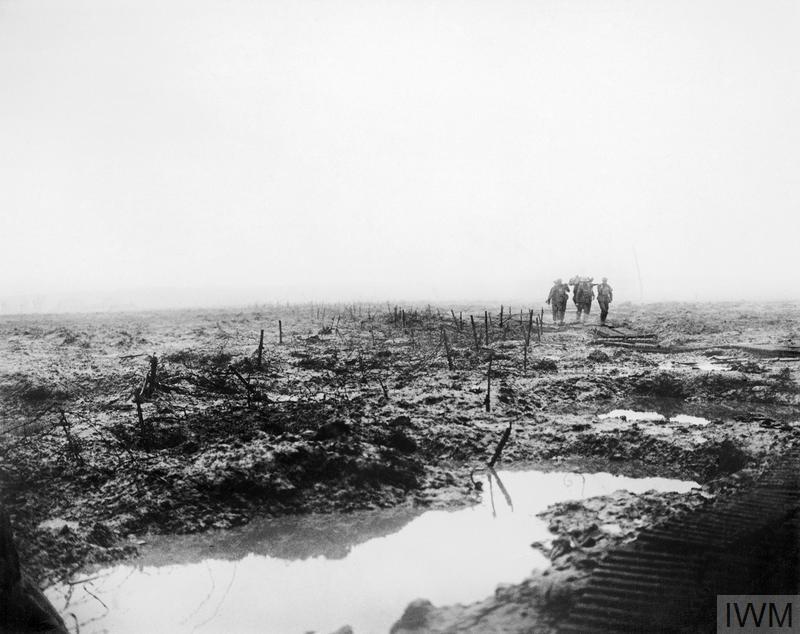The History of the Poppy
Share
Few symbols are as instantly recognisable as the red poppy. Each November, millions of people across Britain and the Commonwealth wear it as an emblem of remembrance. Its story, amid the churned earth of the First World War’s Western Front. Imperial War Museums (IWM) has long been at the heart of preserving this history, ensuring that the poppy remains a powerful reminder of sacrifice and resilience.
From Battlefield Bloom to Symbol of Hope
During the First World War, soldiers encountered a landscape transformed by relentless shellfire. Modern artillery pulverised the soil, creating conditions in which the common poppy thrived. Amid bleak, cratered terrain, these flowers provided what curator Laura Clouting calls “a shocking burst of plant life in otherwise desolate landscapes.” Fields near Ypres and Flanders were often “more or less red with poppies than anything else,” recalled one veteran. For soldiers, these blooms were not merely botanical curiosities; they were a rare sign of beauty and life in a world dominated by destruction. Many pressed poppies into letters home, fragile tokens of hope sent across continents. IWM holds several of these poignant mementoes in its collections, each a silent witness to the human need for connection during war.

IWM (CO 2252)
The Poem That Sparked a Movement
The poppy’s transformation from wildflower to global symbol owes much to words penned in 1915. Canadian doctor Lieutenant Colonel John McCrae, serving near Ypres, wrote In Flanders Fields after witnessing the death of a comrade. Its opening lines, “In Flanders fields the poppies blow / Between the crosses, row on row,” captured the stark juxtaposition of life and loss. Published in Punch, the poem resonated deeply, linking the poppy with remembrance in the public imagination. Inspired by McCrae’s verse, American humanitarian Moina Michael vowed to wear a poppy “in honour of our dead,” while French activist Anna Guérin organised the production of silk poppies to raise funds for war widows and orphans.

IWM (Art.IWM PST 12361)
Britain’s First Poppy Day
In 1921, Guérin persuaded the newly formed British Legion to adopt the poppy as its emblem. That November, Britain held its first Poppy Day. Demand was overwhelming: sellers could not keep pace, and the appeal raised what would equate to millions of pounds today for veterans’ welfare. To meet future needs, the British Legion established its own poppy factory, employing disabled ex-servicemen, a tradition that continues. Scotland soon followed with its own factory, producing a four-petalled design without a green leaf, considered more botanically accurate. Over time, the poppy became inseparable from Armistice Day commemorations, its presence at memorials and on lapels a visual chorus of remembrance.
Beyond Red: Alternative Poppies and Debate
While the red poppy remains the most familiar, other colours have emerged, each carrying distinct meanings. White poppies, introduced by the Peace Pledge Union in the 1930s, symbolise peace and challenge militarism. Purple poppies honour animals killed in conflict. These alternatives reflect evolving attitudes toward remembrance and war, as do debates surrounding the red poppy itself. For some, its association with recent military actions makes it contentious. Yet despite these complexities, millions continue to wear the poppy each November, affirming its enduring role as a symbol of reflection and respect.

IWM (EPH 2284)
IWM and the Poppy in Art and Memory
Imperial War Museums has played a pivotal role in sustaining the poppy’s cultural resonance. In 2014, the centenary of the First World War inspired Blood Swept Lands and Seas of Red, an installation at the Tower of London featuring 888,246 ceramic poppies, each representing a British or Commonwealth life lost in the conflict. Conceived by artist Paul Cummins and designer Tom Piper, the work captured the public imagination, drawing nearly five million visitors. Two elements of the installation, Wave and Weeping Window, toured the UK before becoming part of IWM’s permanent collection. Today, these sculptures cascade through the Air Shard at IWM North, a striking fusion of art and architecture that invites reflection on the human cost of war.

Why the Poppy Endures
More than a century after the guns fell silent, the poppy remains potent because it speaks to universal themes: loss, memory, and hope. Its roots lie in the soil of battlefields, yet its reach extends to classrooms, cenotaphs, and contemporary art. For IWM, the poppy is not merely an object or motif; it is a lens through which we explore the ways war shapes lives. From pressed petals in soldiers’ letters to monumental installations seen by millions, the poppy’s story is one of transformation, of a flower that became a symbol, and of a nation’s commitment to remember.
Discover More on the IWM Shop
Discover our Remembrance Gifts collection, a tribute to the resilience of service men and women since 1914. The proceeds of our shop support the work of the museum, helping to educate and commemorate all those affected by conflict.